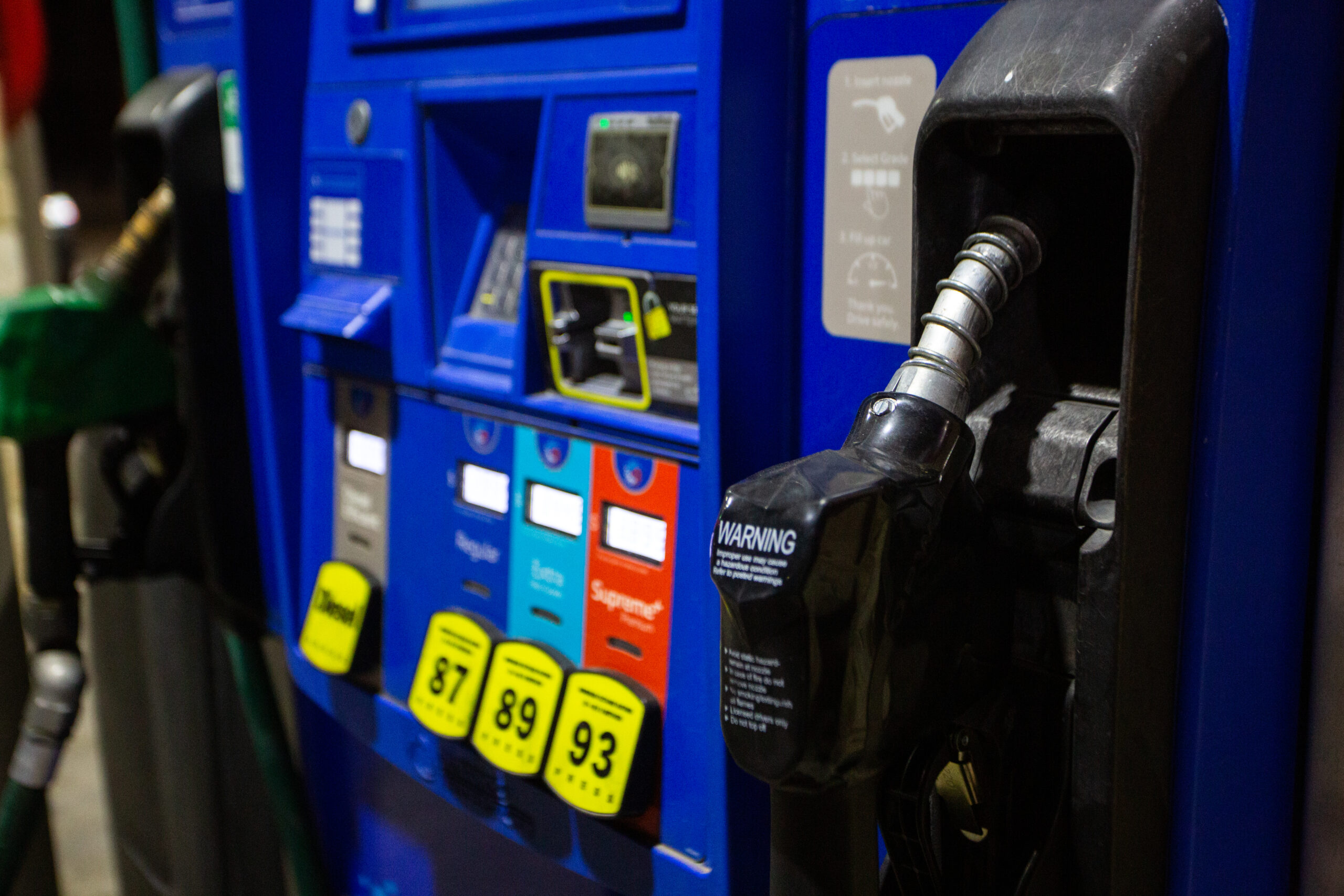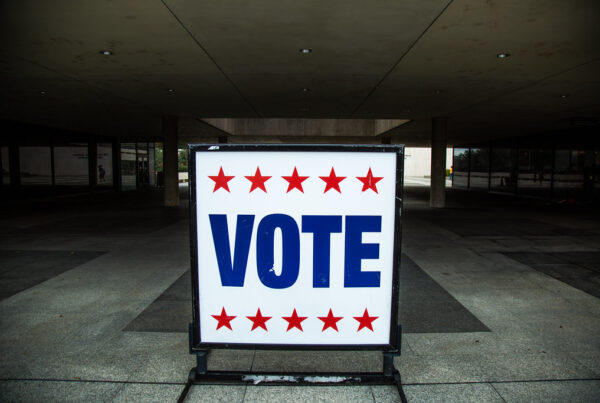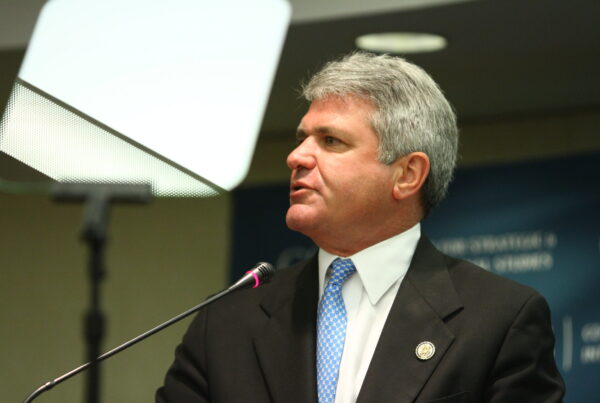Since the mid-1970s, the United States has stored millions of barrels of oil underground, in a series of salt domes in Texas and Louisiana.
The Strategic Petroleum Reserve (SPR), as it’s called, is a protection from disruptions in the oil trade.
At the moment, however, the stockpile is at its lowest level since the 1980s. That’s due largely to President Joe Biden selling more than 40 percent of the reserve in the wake of Russia’s invasion of Ukraine. Now, as tensions rise in the oil-rich Middle East, some are questioning the president’s decision to draw down the reserve.
Ben Lefebvre, oil and gas reporter for Politico, spoke to Texas Standard about the future of the petroleum reserve. Listen to the interview above or read the transcript below.
This transcript has been edited lightly for clarity:
Texas Standard: Those who are criticizing the president for selling off much of the oil reserve, what’s the main critique there?
Ben Lefebvre: The main critique is, in a sense, it’s kind of hindsight being 20/20.
I mean, folks are saying, well, the reserve is half full now, you know, that’s allowed maybe Hamas or other enemies of the U.S. to feel like they can kind of pull a fast one and start some conflicts that the U.S. might feel it’s got one hand tied behind its back because it can’t do much without, you know, having oil prices rise. We don’t have as much oil in the reserve now to let out to stabilize prices, and that’s basically turned into a geopolitical problem for us.
So the underlying mindset is that if the war between Israel and Hamas expands, then that could lead to disruptions in oil imports that the president would need to respond to. And this coming up, as there are a lot of disruptions to that supply line, right?
Correct. You know, it’s not like Israel or Palestine produce any oil. But the idea is if the war over there expands to include Iran, then you’re going to have a problem that does involve a major oil producer. Or you could see disruption at the Straits of Hormuz, where a lot of Middle Eastern oil flows through to get to market. And therefore, you know, that would lead to an oil shock.
And I think a lot of listeners have a very basic question that sometimes goes unasked, and that is, well, how much is the oil reserve, how much is that capable of actually moving markets? Or is it largely a kind of political performative act, if you know what I’m saying?
Yeah, it’s a little bit of both.
I mean, we saw with the massive release that the Biden administration made a couple of years ago, and we have to remember that that wasn’t just the Russia war that was putting a price. We were also coming out of the COVID pandemic when a lot of oil production, it just shut down. And so you had this lag between, you know, people feeling like, “okay, we can go back to work, we can start driving again. I need more gasoline in my car.”
But the oil refineries were still not up to speed. And that was causing a huge, you know, supply and demand issue. So it was kind of two shocks at once.
The issue now is I think there’s still a lot of oil in the reserve. I mean, there are 325 million barrels still in there. But the reserve, I think, you know, it did relieve the price pressure earlier. But I think people also like to have a kind of security blanket. You know, they kind of like to think we have a ton of oil left. If anything does happen, we can release that oil again. It’ll bring prices down.
So I think part of it is there is a feeling that, “well, if it’s only half full, that’s less of a price relaxation it could do if we do need it.” But it’s also the feeling that, you know, like when you’re driving your car, if it’s only half full, you feel like maybe we need to pull over and fill it up again.
When you mentioned that 325 million barrel number, I got on my calculator here real fast, divided that by 20 million barrels, which is the number of barrels consumed in the United States on average every day. That gives you about 16 days. How much of a safety is that?
Well, it wouldn’t be much if every oil rig in the U.S. just shut down at once and never started up again. So that, I think, it’s kind of like not the right metric to use.
You know, again, the first time when Biden did start releasing those large amounts of oil from the SPR, that’s when a lot of drilling rigs were shut down. I mean, that was when we came out of the pandemic and there just weren’t people to man that. different today. It’s different today now where, you know, the U.S. is looking at reaching record high of oil production.
So the amount of oil in the reserves doesn’t exactly correspond to how much oil we have left to use in the United States, nonetheless.
What do you foresee for gas prices? I think the conventional wisdom is we’re going to start to see these prices spike.
We’re seeing prices fall actually quite a bit. There is a little bit of a lag, I think, in gasoline demand in the winter, usually falls off in the summer. And we’re seeing prices coming down quite a bit.
I think the market is spooked by what could happen in the Middle East. Like there’s nothing there happening right now that I think would cause a big shock. I think it’s more of the fear that something could happen.
So the market’s keeping prices high. So I don’t know if we’ll see a huge spike in gasoline prices. But, you know, we might see less of a downturn than we had been expecting earlier.
When are we going to see a decision from the Biden administration one way or the other? Are they saying?
No, not yet. You know, as one analyst kind of told me, they’ve been kind of mugged by reality.
The Biden administration did have a plan to kind of restock the SPR. They said, you know, “we sold oil back when it was $100 plus a barrel. We’re going to buy it back when it’s closer to $70 a barrel.” And they had been doing that. But the problem was geopolitical events kind of took hold and prices never stayed down there.
So, you know, I talked to a few folks who were like, “they probably want to start refilling it if they could.” But they like getting the press releases saying, “oh, for the American public, we ended up making $30 a barrel profit from where we sold it to where we bought it.” But I do think with all the political pressure they’re facing now, they probably will start wanting to buy it back as soon as they can.













